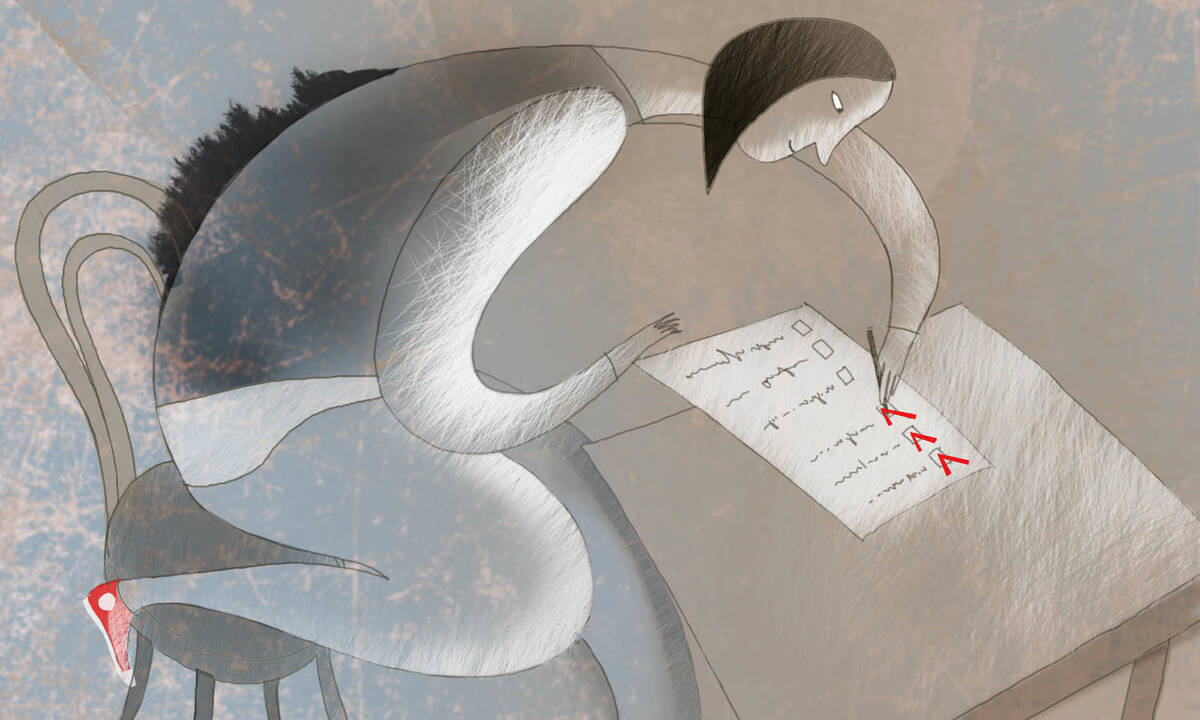But what might this look like in practice? Here are five ideas to consider, each grounded in research from Kellogg faculty.
When you’ve got a lot on your plate, it can be tempting to check off a few of the easier items on your to-do list first. And then, maybe, just a few more easy ones.
“You feel like you’re making more progress,” says Maryam Kouchaki, whose research has found that people gravitate toward simpler tasks when struggling with a heavy workload.
She and her colleagues found, for instance, that when ER physicians were given a choice about which patients to treat, they were more likely to choose an easier patient when they already had a lot of patients under their care.
However, the strategy doesn’t pay off in the long run. Over a six-year period, physicians who’d taken a trickier caseload learned to become more efficient than those who’d treated an easier caseload. “Physicians who are picking up difficult patients are the ones who learn over time, and they generate more value for the hospital,” Kouchaki says.
Because avoiding hard tasks indefinitely cuts off opportunities to improve one’s skills, Kouchaki suggests breaking more difficult projects into bite-sized pieces. That way, you still get the satisfaction of ticking items off your to-do list—but also the growth of tackling the tougher stuff.
Food-safety inspectors use a rigorous process to identify health violations at restaurants, schools, hospital cafeterias, and other places where foods are handed. Still, inspectors are only human, and the quality of their work can vary somewhat.
Specifically, Maria Ibanez and a colleague have found that inspections that occur later in the day result in fewer violations. Each subsequent hour an inspector conducts inspections during the day results in 3.7 percent fewer citations per inspection that day, likely due to fatigue. In addition, if inspectors begin an inspection at a time that would mean they would not finish before their normal quitting time, they finish the inspection 4 percent more quickly than usual—and catch 5 percent fewer violations. The researchers also found that the order in which the inspections occurred could also affect their quality. For instance, after an inspection that yielded a particularly high number of violations, inspectors were likelier to spot extra violations at the next joint, too.
The takeaway here is clear: it’s worth asking yourself (and perhaps measuring) whether certain sequences of tasks or times of day change the quality of your work. “That gives us an opportunity to improve performance by being smarter about scheduling,” says Ibanez.
So quality of work can be affected by scheduling—but what about efficiency?
A study from two Kellogg School professors—Nicola Persico and Rob Bray—tested this idea by altering the way Italian appellate labor court judges schedule court hearings.
The courts, which handle cases having to do with firings and pensions, are notoriously slow, and it takes multiple hearings to resolve a case. So judges typically put each new hearing at the end of the queue, finding the first open slot in the calendar and filling it. They also wait until the conclusion of the current hearing to schedule a new one.
But Persico, Bray, and their collaborators worked with six appellate labor court judges in Rome to implement a new scheduling method over a three-year period. Specifically, they scheduled hearings in advance and grouped them close together. This allowed a case to move through the system quickly once it reached its first hearing because it was unaffected by what happened with other cases.
This new method cut the time it took to resolve a case by 140 days, or 19 percent, relative to judges who used the traditional method.
While this exact approach to juggling tasks may not translate to other activities—or even other judicial hearings—the overall idea is that a lot of workers could probably get more efficient by focusing on completing a few tasks rather than simply pushing forward on many.
“All sorts of workers schedule their workflow ineffectively, in the sense that they tend to jump from one task to another too frequently,” Persico said. “They spread themselves thin, and then they achieve less than they would if they worked on something until completion.”
Collaboration is often described as unilaterally good—but it’s important to remember that there are costs associated with it, too.
Jan Van Mieghem and Itai Gurvich, both professors of operations management, showed in a theoretical paper that when skilled workers are engaged in concurrent collaboration—when they are all needed to execute a single task—the throughput of the entire system can suffer. This need to synchronize while coordinating can lead to a productivity loss, and workflow can slow down even further than would be predicted by the usual bottlenecks in the system.
These costs show up in real-world situations, too. A study conducted by Van Mieghem, Gurvich, and then-PhD student Lu Wang found that the productivity of one type of physician, known as a “hospitalist,” fell dramatically when that physician was required to collaborate with specialists. Collaboration had a direct effect by adding the time needed to communicate with the specialist. But it also had a “spillover” effect that ended up causing the hospitalist to spend an extra 20 percent of time on the patient’s medical chart.
Twenty-five percent of this spillover came from the increased time it took to document the conclusions of a valuable consultation. But forty-five percent came from work sequencing, or the effect of interruptions by collaborators that necessitates the hospitalist to change their workflow—switching from one chart to another, say.
“Being busy may increase interruptions,” says Van Mieghem. “At the end of the day, being busy may not equal being productive.”
What if you could keep your schedule and productivity levels pretty much the same—but magically make everyone happier with your performance?
It sounds too good to be true. But it turns out that rethinking how (and how often) you update your clients on your progress can change how they perceive your effort. This is called “operational transparency”—the idea being that “if you can see how hard I’m working, then you’re going to appreciate it more,” says Bray. Plus, customers may appreciate feeling in the loop.
Still, transparency can come with a downside. After all, if you show customers every step, they might also notice long lulls between progress reports.
So how can you maximize the upside of this transparency while minimizing the dirty laundry? Bray analyzed a huge data set of package-delivery records from the giant e-commerce firm Alibaba in China and found that the timing of updates matters.
When customers got frequent status updates on their online orders toward the end of the delivery, they tended to give the service a high score. But if activity was clustered near the beginning and followed by inactivity, scores tended to be lower—even if total delivery time was the same. He suspects this pattern emerged because customers pay more attention to what happens late in the process. “Usually, people remember the end of the experience,” Bray says.
The upshot? Consider ramping up your communication during the final leg of a project—and reap the rewards.




